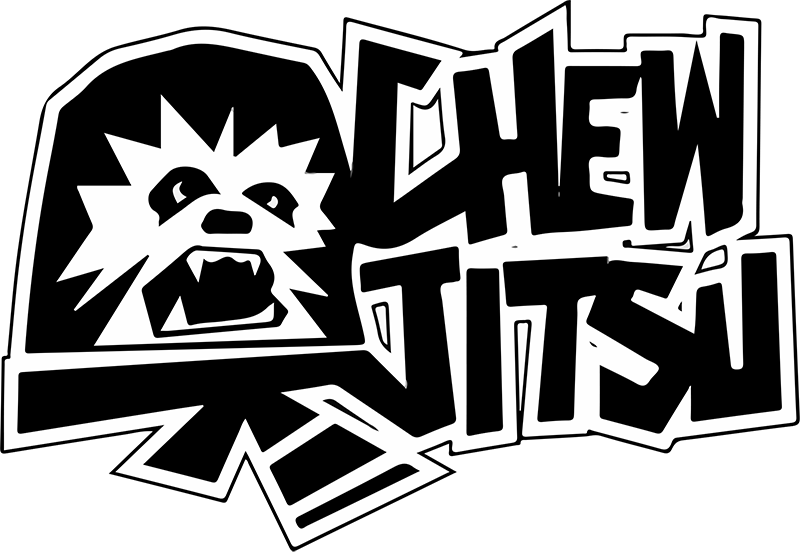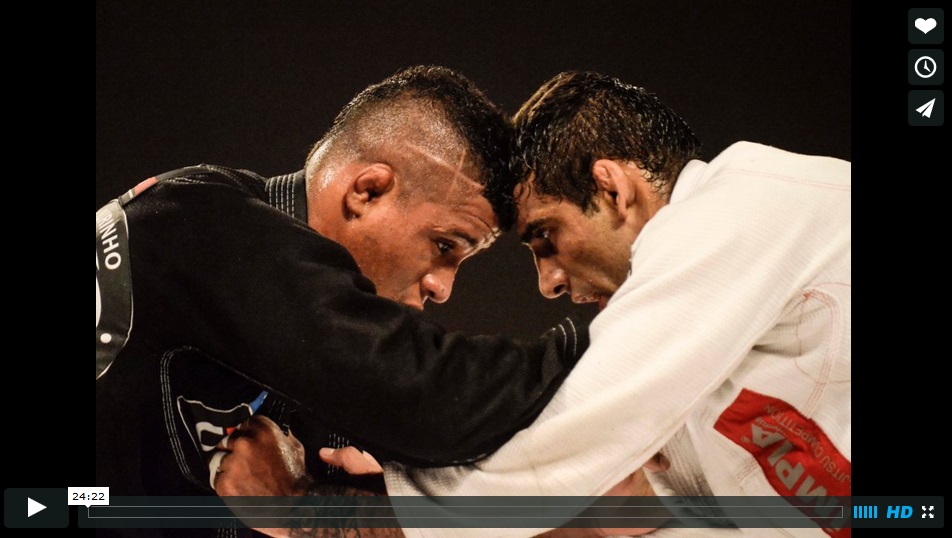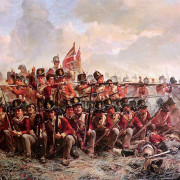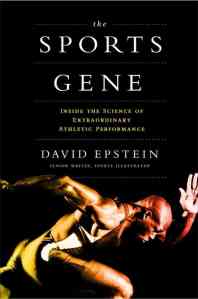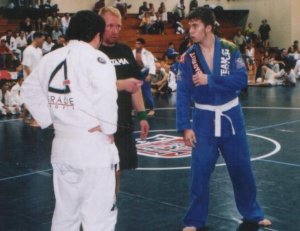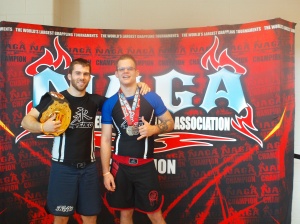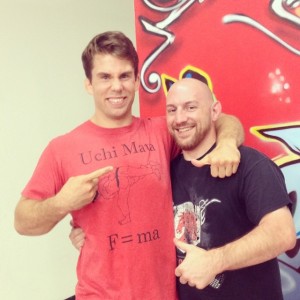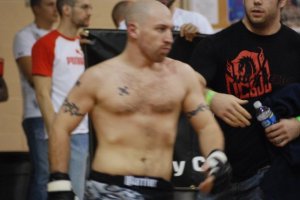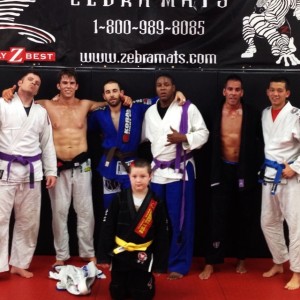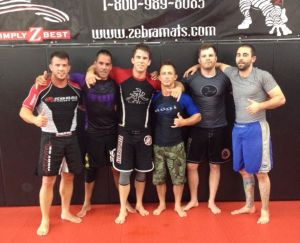So before you continue reading please know in advance that I am going to nerd out a little. If you’ve read the blog before or you’re one of my students, you know I’m a history geek. With that said, let’s get started.
Having presense of mind is something that I talk a lot about with my students. I explain in different ways but essentially when I say presense of mind, I’m talking about having the ability to remain calm and cool in tough situations. Think about your own personal experiences. Have you ever been stuck under someone’s mount or side control while you were tired and became frustrated? Maybe they were squeezing tight and pressing their shoulder into your face and you became even more frustrated. Following this frustration you start to make BJJ 101 mistakes like pushing on someone’s chest from the bottom of mount “bench press” style. Eventually you tired out and you became a sitting duck for whatever attacks your opponent decided to throw at you. Has that ever happened to you? If not, then my hats off to you because this is how I spent the first couple of years in BJJ. I was fine if things were going in my favor but when I got stuck in a tough spot I couldn’t get out of easily, I lacked the mental resolve to remain clear-headed and I became frustrated. In these scenarios my frames, good hand and body position, hip escapes and proper breathing quickly degraded into hyperventilation and sporadic pushing from side to side. Eventually after I had used up whatever reserve of energy I had left, I would lie down and accept my fate of being submitted. This reminds me of the Saulo Ribeiro quote, “If you think, you are late. If you are late, you use strength. If you use strength, you tire. And if you tire, you die.”
Now, if you were to ask me 10 seconds after this spastic effort to escape to explain the method with which I should escape a bad position. I would have shown you how to set up a good frame, use hip movement and body positioning to escape while using minimal strength. So then, the question has to be asked. Why did I break from what I knew was right and do things that I knew were wrong? The answer is simple. I broke mentally and lost my focus. I let frustration take root in my mind and get the best of me. On a side note, I believe being able to keep your head on in tough situations is one of the side benefits of BJJ training that translates well off the mat. You learn how to stay calm in bad situations, a skill that I have definitely benefitted from over the years outside of the gym.
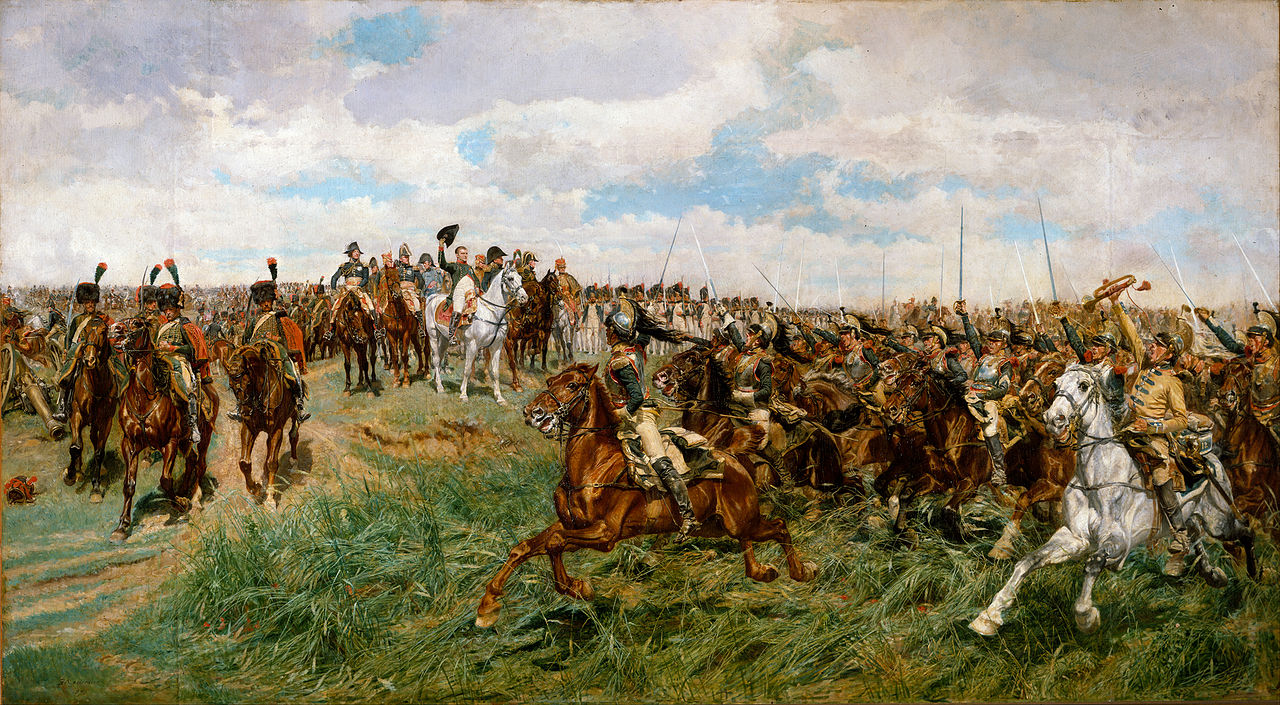
Onto the parallel
The parallel I am going to draw came while reading Alessandro Barbero’s book The Battle which is a 460 page book detailing the battle of Waterloo bit by bit. After reading the book, there were numerous parallels that could be used for BJJ or combat sports. Then again, maybe the parallels only exist because it’s hard for me to turn off the section of my brain that thinks about BJJ, even when reading.
During the battle there came a point where Wellington’s infantry were formed in squares resisting against the French cavalry, which had just routed the British skirmishers and artillery from a sector of the battlefield. If you are unfamiliar with the way battles went down back in the Napoleonic era let me give you a quick crash course on some of the basics. Muskets weren’t very accurate. To make up for this lack of precision, commanders would make the infantry form tightly packed lines which would increase their chances of hitting the enemy by allowing more soldiers to fire at the same time at the same target. If infantry were in a line formation and were attacked by cavalry, their flanks would be wide open for the enemy to molest. So, to combat cavalry, infantry would form a hollowed out square formation. All the men would face outward while most typically the officers would be inside the square yelling commands and encouragements. This square would offer no flank for the enemy to take advantage of during the fight. However, the problem of course with the square was that while it left no flank for cavalry, it also did not offer enough concentrated firepower to pack a serious punch. While in squares they would have their bayonet’s fixed and pushed out to create a barrier of spearheads against any charging horses. Believe it or not, horses are incredibly reluctant to run headlong into a densely pack group of blades even if their rider would try and have them do so. You could probably start to draw comparisons to positional control of the battle field and positional control on the mats. When you’re able to control the position you limit your opponent’s options and can force them to make mistakes. But we can save that for another time.
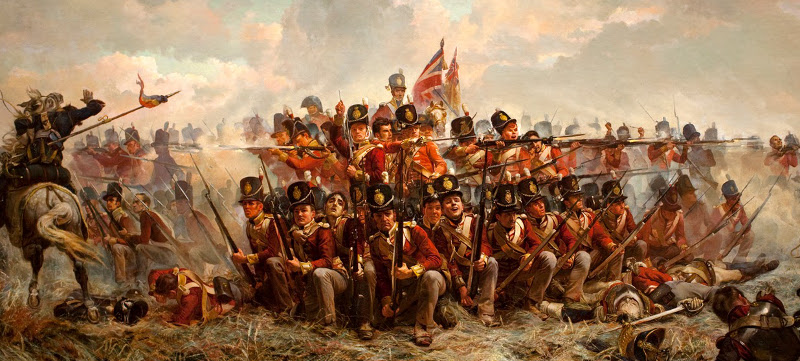
The French cavalry units opposing the British Infantry at this point were most notably the cuirassiers and the elite division of the Imperial Guard known as chasseurs a cheval. During this time period the cavalry of the Grande Armée were some of the most famous in the world. In the book Barbero describes a risky psychological game that happens at this point.
“The French cuirassiers were assembled in plain view on the crest of the ridge, little more than a hundred yards away from the nearest squares, far enough that it would have been useless for the infantry to start shooting at them. When a squadron had chosen its objective and was ready to move, it set out at a walk, superior officers in front, their sabres unsheathed. If, at this point, the men in the square started to fidget a bit too much, the cuirassiers’ officers could risk accelerating the pace to a trot, which meant that the infantry had time to fire one volley only. Should that volley be fired badly – too soon or too high – the cavalry could pass to a gallop, and then the infantry soldiers, in all probability, would lose their nerve and clear off, and the inevitable result would be a massacre. However, if the infantry kept in place by the blows and curses of its officers and seargeants, remained steadfast and held its fire until the last possible moment, the cavalry would usually slow its pace, veer to the right or left before impact, and ride off in search of another target. In this case, the soldiers in the squares could shoot with impunity, and the cavalry would receive the full force of the infantry’s fire.”
Essentially if the men in the squares simply stayed in place and held their fire till the last second when they would have the best chance of hitting the cavalry, while some would die, the majority of them would remain alive. Eventually the cavalry would weaken against the defensive position and be forced to retire. However, if they were to lose their nerve and panic, shooting too early or leaving their position. Then themselves and their comrades would be opened up to attacks and would suffer a high number of casualties. It seems simple enough. Don’t fire your gun and stand or kneel in place with your musket and bayonet pushed out. But being faced with the world’s most renowned cavalry while men around you drop to shots from French tirailleurs and artillery is not an easy task. Reading some of the first-hand accounts listed in the book give you a feeling that the men on the British side stuck in these squares were a little freaked out because they knew who the French cavalry were. Similar to how you might feel when you see your opponent at a tournament decked out in patches from a really tough affiliation or maybe when you have a visitor drop by your gym and they have a higher belt than you. One officer of the Royal Engineers was quoted saying, “The first time a body of cuirassiers approached the square into which I had ridden, the men – all young soldiers – seemed to be alarmed. They fired high and with little effect, and in one the angles there was just as much hesitation as made me feel exceedingly uncomfortable.” As the charge came towards the squares a Private Morris of the seventy third was so intimated by the size of the men, their horses and the shining steel armor they wore that he thought, “We could not have the slightest chance with them.” Even senior officers had their worries. Major von Baring watched from a short distance as the cavalry advanced came crashing into the ranks of the squares and would go on to say, “I could see all this going on, and I’m not afraid to admit that my heart sank more than once.” You get the feeling that knowing that they were in the proper positioning on the field wasn’t all that comforting to the British and allied forces.
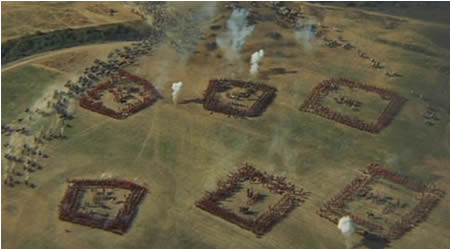
This, to me, is the moment where the men needed the mental resolve to rely on their training and stick to their guns. They had to resist panic and remain in position, even though this went against everything their bodies surely felt. This type of internal struggle can rear its ugly head when you’re tired or frustrated and you’re not in the most desirable spot on the mat. Your body might be pushing you to give up and quit because it’s stressed, and you need a clear head and determination to extinguish these thoughts and remain calm. You exhausting yourself trying to bench press out of mount or giving up your back in a desperate attempt to escape are the same as the men of these squares switching up in a line formation to attack and opening their flanks. The attack might work but more than likely it will lead to them exhausting their manpower in lopsided attempt. Even worse, turning your back is the same as these infantry panicking under the pressure of the cavalry and running away out of fear or frustration.
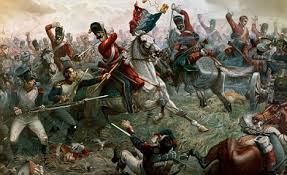
Wellington’s infantry squares remained in place, and as the conflict wore on Napoleon’s famed French cavalry were unable to break the ranks. The allied forces would go to retaliate and ultimately win the Battle of Waterloo. Should you find yourself stuck in an unfavorable position on the mat, keep your head on. Don’t allow yourself to give into stress or negative emotions brought on by frustration. They will only get you in trouble and leave you exposed. Take a deep breath and do you best to keep with sound technical fundamentals, as shown by your instructor, and make this disadvantage temporary. If done right, you’ll be able to escape or reverse the situation and with enough energy to mount your own attack.
